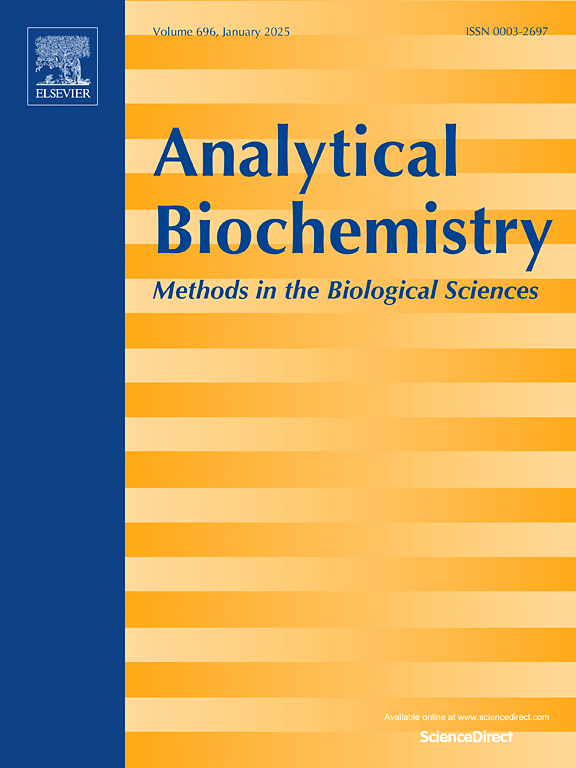In vitro selection of dye-fluorescence-enhancing peptide aptamer by cDNA display
IF 2.6
4区 生物学
Q2 BIOCHEMICAL RESEARCH METHODS
引用次数: 0
Abstract
Although Green Fluorescent Protein (GFP) is useful and most widely used, steric hindrance due to its size and the time required for chromophore formation are complications. However, it is difficult to form chromophores with peptides to reduce the molecular weight. Therefore, we focused on peptides that can become fluorescent by binding to dyes. In this study, a novel dye-fluorescence-enhancing peptide aptamer was selected by the cDNA display method, which was confirmed by the yeast surface display method. This peptide aptamer binds to the non-fluorescent dye QSY®9 and enhances its fluorescence by preventing rotation of its benzene sulfone group. The method described in this paper should enable the development of new cell imaging methods using non-fluorescent dyes and peptides.

通过 cDNA 展示体外选择染料荧光增强多肽适配体。
虽然绿色荧光蛋白(GFP)非常有用,而且应用最为广泛,但由于其体积庞大,形成发色团所需的时间较长,因此存在立体障碍。然而,用肽来形成发色团以降低分子量是很困难的。因此,我们将重点放在通过与染料结合而产生荧光的肽上。在这项研究中,我们通过 cDNA 展示法筛选出了一种新型染料荧光增强多肽适配体,并通过酵母表面展示法进行了确认。这种多肽适配体能与非荧光染料 QSY®9 结合,并通过阻止其苯砜基团的旋转来增强其荧光。本文介绍的方法将有助于开发使用非荧光染料和多肽的新型细胞成像方法。
本文章由计算机程序翻译,如有差异,请以英文原文为准。
求助全文
约1分钟内获得全文
求助全文
来源期刊

Analytical biochemistry
生物-分析化学
CiteScore
5.70
自引率
0.00%
发文量
283
审稿时长
44 days
期刊介绍:
The journal''s title Analytical Biochemistry: Methods in the Biological Sciences declares its broad scope: methods for the basic biological sciences that include biochemistry, molecular genetics, cell biology, proteomics, immunology, bioinformatics and wherever the frontiers of research take the field.
The emphasis is on methods from the strictly analytical to the more preparative that would include novel approaches to protein purification as well as improvements in cell and organ culture. The actual techniques are equally inclusive ranging from aptamers to zymology.
The journal has been particularly active in:
-Analytical techniques for biological molecules-
Aptamer selection and utilization-
Biosensors-
Chromatography-
Cloning, sequencing and mutagenesis-
Electrochemical methods-
Electrophoresis-
Enzyme characterization methods-
Immunological approaches-
Mass spectrometry of proteins and nucleic acids-
Metabolomics-
Nano level techniques-
Optical spectroscopy in all its forms.
The journal is reluctant to include most drug and strictly clinical studies as there are more suitable publication platforms for these types of papers.
 求助内容:
求助内容: 应助结果提醒方式:
应助结果提醒方式:


